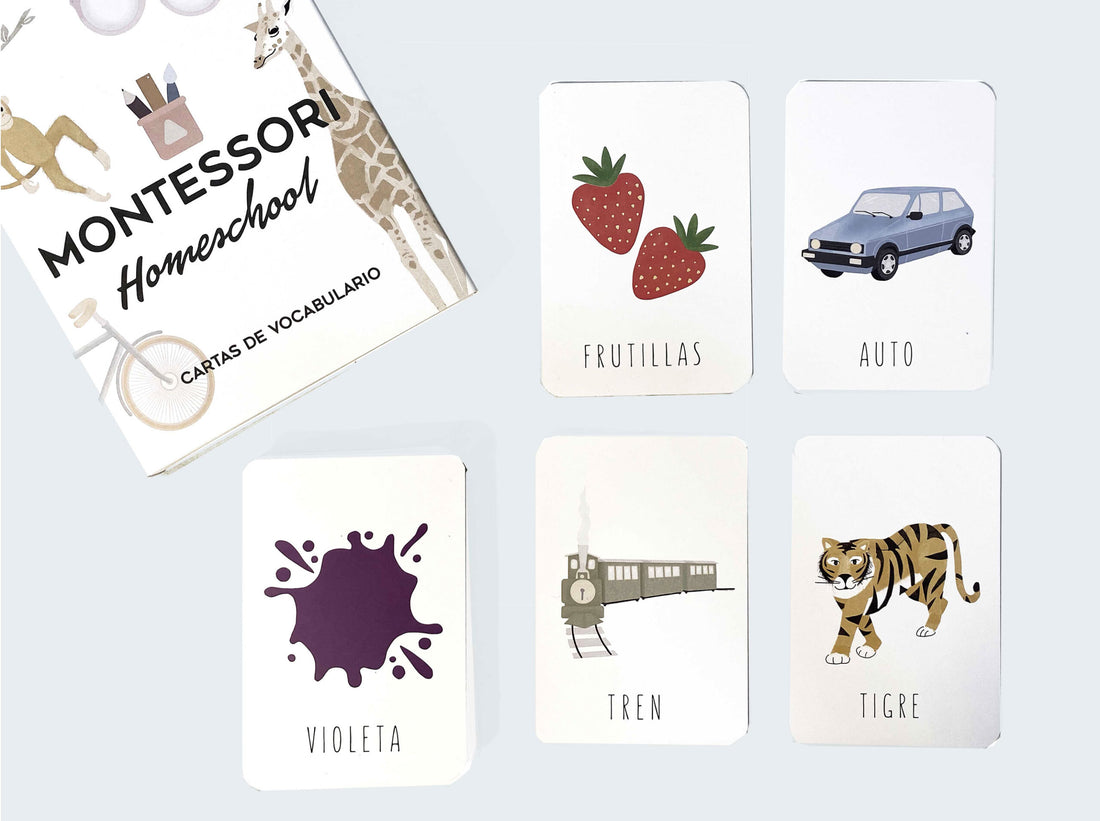Vocabulary cards are a recurring material in many schools and many homes. They help children pronounce their first words by visualizing and repeating a concept. Also, they help to incorporate new words to their vocabulary, increasing their word options when putting together their first sentences. Montessori Homeschool vocabulary cards are available in multiple languages, therefore their function is also to stimulate children’s first words in a secondary language.
But in Montessori Homeschool we go beyond repetition and memorization and we incorporate the flash cards in activities with association of concepts. For example, the child holds an orange as he seeks to associate it to the card with the orange illustration.
Keeping in mind the philosophy of the Montessori method, the Montessori Homeschool vocabulary cards are illustrated with real elements to help the child incorporate concepts from their everyday environment.
It is important that they understand and acknowledge the world they are a part of to help them adapt naturally and consciously.
Going deeper into this topic, you will find many theories which suggest that it is not ideal to stimulate language through repetition. Despite this, I must clarify that I have used them with repetition but only as a first step when presenting the activity. Not only do I use the letters as a “memory test” but I also incorporate them into different Montessori activities.
To make it better understood, here are three examples of how to take advantage of the Montessori vocabulary cards.
1)To identify concepts.
From the presentation of each card and the pronunciation of the name of the object / concept aloud.
First we present all the cards to the child, then we repeat it again saying
“This is ……”, for example, “This is a pencil”.
And finally, the third time, we will repeat each card again but asking the child, Where is the pencil? If the answer is not correct, we do not correct it but we re-ask.
If the child keeps on giving the wrong answer, let’s let it slide; it means that the child still has to review all the concepts and practice until he is ready to say them well.
2)To identify and match concepts.
To present this activity, it is necessary to organize a work table with the following elements: vocabulary cards and a basket with objects that represent the concepts illustrated in the cards.
The adult must present each letter and object to the child. Then the child will name them and then have to match them. Each card corresponds to an object.
3)Incorporate another language.
As I developed my career in Australia, I had the opportunity to work with many families interested in having their children learn another language from a young age. Montessori Homeschool vocabulary cards help the child to become familiar with words in a new language.

